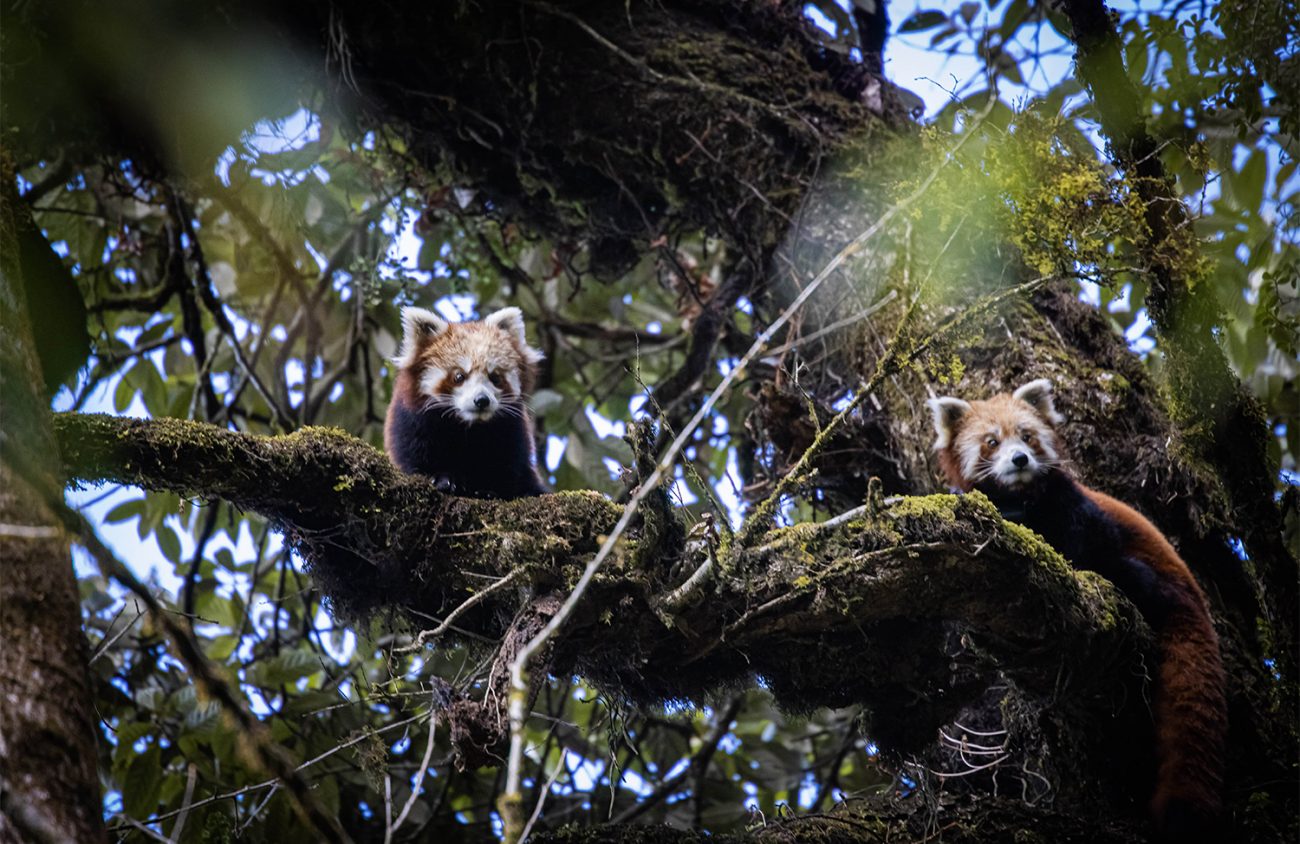I’ve only seen a red panda once in my life.
I was spending the day at an amusement park with some local friends while visiting Hong Kong. I found out the place, Ocean Park, doubled as a zoo — because who doesn’t want to ride a roller coaster in between checking out king penguins and koala bears? Ocean Park is tucked in the hills overlooking the ocean, and you have to take a cable car over the mountain to get to the other side of the park.
The red panda made its appearance as I was leaving the park. He was surrounded by a miniature bamboo grove. I took a moment to admire the small, fuzzy red-haired creature, sleeping in a tree despite a dozen or so tourists looking and talking at him in loud awe. He looked nothing like the giant panda in the next pen over, but he sure was cute.
Since I barely made it through the day without sweating in the summer humidity, I wondered how the thick-furred red panda functioned in the humidity and high summer temperatures.
As it turns out, the ring-tailed mammal is native to Southwestern China and the Himalayas and is fairly adaptable to many climates. It’s also endangered.
If you’ve ever wanted to see a red panda in person, you don’t have to go to Hong Kong (though Ocean Park is a much better experience and local favorite than, say, Disneyland Hong Kong). Instead, I recommend you go on an adventure through a local ecotourism and conservation organization based in Eugene.
The trip? Hiking in the lush forests of the Himalayan foothills and spotting red pandas in their natural habitat.
Working out of Eugene and Kathmandu, Nepal, the Red Panda Network (RPN) has organized trips for red panda fans while supporting conservation efforts since 2007.
I’ve never been on one of these trips, but the experience of seeing (in my opinion) one of the cutest creatures in the wild is a step up from a Chinese theme park-zoo.
There are a few different versions of the panda-spotting trip: one for ecologists and staff of RPN’s zoo partners, a photography-centered trip and a standard hike to see red pandas.
Any adventure chosen is a choice to partner with Red Panda Network’s efforts in conservation, says Terrance Fleming, RPN’s development manager. It achieves this by partnering with the local villages and communities in Nepal. He says RPN has a strong relationship with the people in villages they frequent. Travelers stay in the homes of the locals and pay to use other local services: meals, transportation, porters, etc.
RPN also supports the endangered red panda by teaching farmers sustainable practices and managing forest clearcutting.
“We’ve found that eco-tourism is one of the most effective ways to conserve species, specifically for red pandas,” Fleming says.
If you decide to take a trip, it will take you hours to fly to Kathmandu, and another five to eight hours driving in a jeep up to a village in the mountains. Once settled into the village, forest guardians — local stewards and conservation ambassadors from the local forests hired by RPN — will take the group up into the foothills of the Himalayas, surrounded by some of the biggest and tallest peaks in the world, including the ethereal Mount Everest.
It may take a few days to spot a red panda in the wild, but there is plenty of other wildlife to observe. On his trip, Fleming says, he saw a whole family of yellow-throated martens who are, unfortunately, predators of red pandas, despite being smaller. There are also forests bursting with rhododendron bushes.
The first time a group spots a red panda is an emotional experience, Fleming says. The groups often spend several days hiking through the diverse ecological wonderland of the Himalayas before they catch a glimpse of the elusive pandas.
“When you finally get to a place when you are looking up at one, people tear up. They get really emotional,” Fleming says. “It’s a very spiritual experience.”
The red panda’s thick fur acts as camouflage in the tree moss. They don’t want to be seen and if disturbed, their defense is to run and hide. When spotted, Fleming says, they are always looking down on you from their position curled around a tree branch.
During the different hikes, Fleming says they follow strict eco-tourism protocol. Groups don’t go back to the same site often, and they make sure to stay a safe distance away to not disturb the pandas.
“The fact that you get to go see a species that is so mysterious and rare without disturbing their environment and supporting local communities that their future depends on is pretty special,” Fleming says. He adds that every year, groups have seen more and more red pandas, due in part to conservation efforts, and that the forest guardians and RPN trip leaders are getting better at finding them.
For more information on the Red Panda Network’s trips, conservation efforts or to donate, visit RedPandaNetwork.org.
